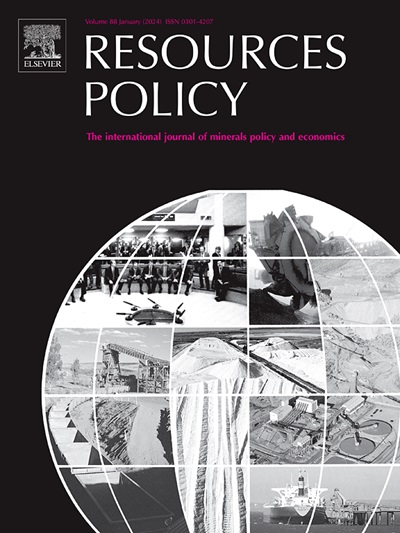经营许可:了解澳大利亚采矿业监管结果的变化
IF 10.2
2区 经济学
0 ENVIRONMENTAL STUDIES
引用次数: 0
摘要
有关自然资源的文献认为,要继续开发矿山,矿业公司需要“经营许可证”——法律当局的批准,体现在监管许可证中;得到受影响社区和更广泛社会的认可,获得社会许可;以及投资者、贷款人或购买者的批准,即经济许可证。虽然概念上不同,但实际上这些许可证相互作用。授予或撤销社会许可证的社区和抗议运动也可能对监管机构施加压力,或通过抵制和撤资运动影响经济许可证。在本文中,我们以澳大利亚联邦监管的矿山为例,通过“经营许可证”的多个维度来研究影响商业风险的压力。研究了2000年至2020年期间409项监管审查、批准或撤回的采矿申请,我们使用竞争风险风险模型和线性回归来检验商业风险(审查时间更长、条件更多)和撤回选择如何受到以下因素的影响:矿山属性、竞争权利要求和土地使用、反对派动员水平、执政政党的变化和市场价格。我们发现,新项目,以及那些触发了对其水资源影响的独立评估的项目,可能会经历更长时间的审查。农业是竞争土地用途的矿山也面临更长的审查,矿山支持者更有可能撤回他们的提案。与我们的期望相反,动员反对地雷与更快的批准时间有关,但也有更多的条件。本文章由计算机程序翻译,如有差异,请以英文原文为准。
Licensing to operate: Understanding variations in regulatory outcomes in the Australian mining sector
Literature on natural resources has argued that to proceed with the development of a mine, mining companies need a “licence to operate” – the approval of a legal authority, embodied in a regulatory licence; the approval of the affected community and broader society, a social licence; and the approval of investors, lenders, or purchasers, an economic licence. While conceptually distinct, in practice these licences interact. Communities and protest movements which bestow or withdraw social licence may also exert pressure on regulators, or influence economic licences through boycott and divestment campaigns. In this paper, we examine the pressures which affect business risk through the multiple dimensions of the “licence to operate,” in the case of federally regulated mines in Australia. Studying 409 mining applications that were under regulatory review, approved, or withdrawn between 2000 and 2020, we use competing risk hazard models and linear regressions to examine how measures of business risk (longer times in review and more conditions) and choices to withdraw are affected by: the attributes of the mine, competing rights claims and land-uses, levels of oppositional mobilization, changes in political parties in power, and market prices. We found that new projects, and those that triggered an independent assessment of their impact on water, were likely to experience longer reviews. Mines where agriculture was the competing land use also faced longer reviews, and mine proponents were more likely to withdraw their proposal. Contrary to our expectations, the mobilization of opposition to a mine was associated with faster time to approval, but also a higher number of conditions.
求助全文
通过发布文献求助,成功后即可免费获取论文全文。
去求助
来源期刊

Resources Policy
ENVIRONMENTAL STUDIES-
CiteScore
13.40
自引率
23.50%
发文量
602
审稿时长
69 days
期刊介绍:
Resources Policy is an international journal focused on the economics and policy aspects of mineral and fossil fuel extraction, production, and utilization. It targets individuals in academia, government, and industry. The journal seeks original research submissions analyzing public policy, economics, social science, geography, and finance in the fields of mining, non-fuel minerals, energy minerals, fossil fuels, and metals. Mineral economics topics covered include mineral market analysis, price analysis, project evaluation, mining and sustainable development, mineral resource rents, resource curse, mineral wealth and corruption, mineral taxation and regulation, strategic minerals and their supply, and the impact of mineral development on local communities and indigenous populations. The journal specifically excludes papers with agriculture, forestry, or fisheries as their primary focus.
 求助内容:
求助内容: 应助结果提醒方式:
应助结果提醒方式:


